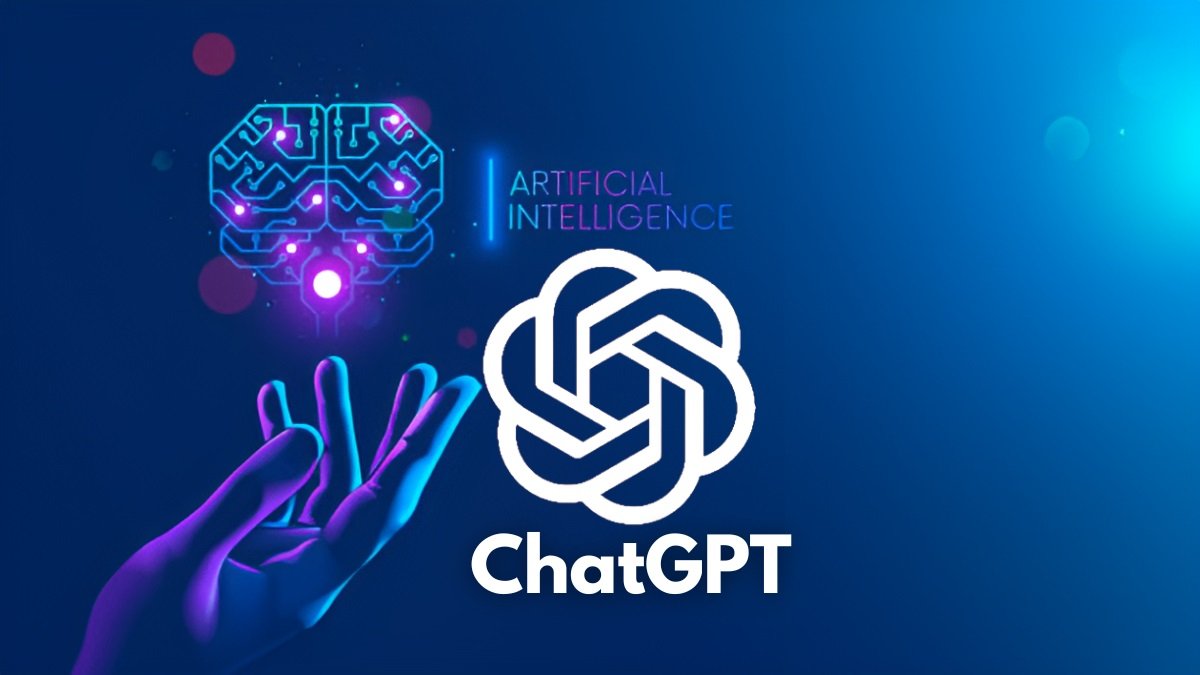ChatGPT 4
Use: >>>>>>>> ChatGPT!
Hello! Lately, there has been quite a buzz about Chat GPT, or Generative Pre-trained Transformer. It’s a language model developed by OpenAI that utilizes deep learning techniques to generate text similar to human speech. It can be used in a wide variety of natural language processing tasks, such as language translation, summarization, and text generation. It’s important because it enables computers to better understand and generate human-like text, which can be very useful in many different applications.
Key Features:
- Speak your language! Chat GPT can understand natural language, making it very user-friendly.
- Pre-training superstar! This model is pre-trained on massive datasets of natural language, allowing it to generate more accurate and contextualized responses.
- Speak without pause! Chat GPT is capable of generating text smoothly and coherently, making responses seem very natural.
- Context, context, context! Chat GPT uses conversation context to better understand questions and generate more precise and relevant responses.
- Adaptability is its middle name! Chat GPT can adapt to different types of conversations and users, meaning it can provide personalized and relevant responses.
- Learns from you! Chat GPT can continue learning from each conversation it has, allowing it to improve its ability to provide accurate and relevant responses.
- Multilingual like a polyglot! Chat GPT can process multiple languages, making it ideal for conversations in different languages.
- Hears your voice! Chat GPT can also integrate with speech recognition systems to provide an even more natural conversation experience.
- No limits for it! Chat GPT can scale to handle large volumes of conversations, making it useful for businesses with large volumes of customer interactions.
- Very friendly! Chat GPT provides an accessible way to interact with users, making it useful for people with disabilities or those who have difficulty writing or speaking.
OpenAI
OpenAI is a research institute focused on developing artificial intelligence in a responsible and safe manner. It was founded in 2015 by Elon Musk and several other high-profile individuals with the goal of advancing the field of AI and ensuring it is used for the benefit of all. OpenAI conducts research in a variety of AI-related areas, including machine learning, reinforcement learning, and general artificial intelligence. The organization has made several significant contributions to the field of AI, including the development of the GPT-3 language model.
As a research institute OpenAI’s primary focus is on conducting cutting-edge research in the field of artificial intelligence. This includes conducting experiments, publishing papers, and developing new technologies and algorithms that push the state of the art in AI. In addition to its research efforts, OpenAI also works to promote the responsible development and use of AI and to ensure that the technology is used for the benefit of all. The organization collaborates with other research institutions, companies, and organizations to achieve these goals.

The Latest from OpenAI, Chat GPT-4
The latest from OpenAI is Chat GPT-4, an even more powerful language model than its predecessor, GPT-3. With 220 billion parameters, GPT-4 is one of the largest and most advanced language models available today.
What’s impressive about GPT-4 is that, like GPT-3, it’s capable of generating coherent and realistic text on a wide range of topics, but with significant improvements in accuracy and context. Thanks to this, GPT-4 can generate even more precise and detailed responses than its predecessor. Additionally, GPT-4 is capable of multitasking natural language processing tasks simultaneously, making it an even more efficient and powerful model.
As for applications, GPT-4 has the ability to translate languages with unprecedented accuracy, making global communication smoother and more accessible. It can also engage in deeper and more meaningful conversations with users, making it more useful for chatbot applications and customer service. Furthermore, GPT-4 is capable of generating even more convincing and authentic written content than its predecessor, making it ideal for creating articles, stories, and other types of content.
Chat GPT-4 is a significant improvement over its predecessor, GPT-3, offering greater precision, context, and efficiency. With its impressive natural language processing capabilities, GPT-4 is one of the most advanced and promising language models available today, with great potential to drive innovation in a wide variety of industries and applications.
How AI Improves Web Design?
Artificial intelligence is a very useful tool for improving web design in various ways. Thanks to AI, we can analyze data and user behavior to obtain valuable insights that designers can use to create more attractive and effective websites. It also allows us to automate tedious tasks, saving designers time, such as generating design concepts or variations based on specific styles or guidelines. Additionally, AI helps us test and optimize designs, providing useful feedback for designers to make informed decisions and improve the design. In summary, using AI can significantly enhance the user experience and effectiveness of websites, and we expect to see even more innovative and useful applications in the future. It’s exciting to think about all that we can achieve with this technology!
AI in Web and Graphic Design Tools
Adobe Sensei: It’s like having a personal design assistant! This artificial intelligence and machine learning platform developed by Adobe helps designers automate tedious and repetitive tasks. It also improves the quality of the final results and increases productivity.
Canva: It’s a super practical and fun tool! It uses artificial intelligence to recommend designs and styles that fit your content and chosen theme. Additionally, it offers customizable templates that allow you to easily design graphics for social media, presentations, print designs, and more.
Figma: It’s a very useful tool for designing user interfaces! It uses artificial intelligence to help designers create scalable designs that are compatible with multiple devices. It also enables real-time collaboration, making it perfect for teamwork.
Designhill: It’s like having your own design team at your disposal! This online graphic design platform uses artificial intelligence to offer suggestions and style recommendations in your designs. You can create custom designs for logos, business cards, brochures, and much more.
Artisto: It’s an AI app to add an artistic touch to your photos and videos! This mobile app uses artificial intelligence to apply filters and artistic effects to your photographs and videos, allowing you to create unique and personalized images and videos.
Pikazo: It’s a very creative AI app! It uses a technique known as “style transfer” to create custom art designs using artificial intelligence. You can combine different artistic styles to create unique and stunning designs.
I hope this list of AI tools for web and graphic design has been interesting and helpful.
Sites that Use AI to Generate Images
Midjourney: Midjourney is an independent research lab that also serves as the name of an AI program that allows users to create images from textual descriptions. This tool is similar to OpenAI’s DALL·E and open-source Stable Diffusion. As a lab, we are dedicated to exploring new technologies in the field of artificial intelligence and work closely with experts and advisors to develop innovative solutions for our users.
ArtBreeder: This website uses a combination of artificial intelligence and generative design to create unique and stunning images. You can mix different images and styles to create something entirely new.
AI Painter: This website uses artificial intelligence to transform your photos into works of art, allowing you to apply different artistic styles and effects easily and quickly.
Runway ML: This website is an artificial intelligence platform for artists and designers that allows them to create and experiment with different machine learning models to generate unique images.
Let’s Enhance: This website uses artificial intelligence to enhance the quality of images, allowing you to increase their resolution and improve their sharpness and clarity.
NeuralStyler: This website uses artificial intelligence to apply different artistic styles to your images, allowing you to create custom and unique images.
Artisto: This website uses artificial intelligence to apply different filters and artistic effects to your photos and videos, allowing you to create personalized and unique images and videos.
These are just some examples of websites that use artificial intelligence to generate images. I hope this list has been useful. Have fun exploring and creating images with AI!
Tips for Responsible Use of AI in Design
Don’t abuse AI: Although artificial intelligence is a powerful tool, it’s not always the solution to all design problems. It’s important to assess whether you really need to use AI before diving in.
Quality above all: Although AI can help you design more quickly and efficiently, it’s important to ensure that the results are of high quality and meet the design objectives. Don’t settle for mediocre results just because AI saved you time.
Learn to use AI: It’s important to learn how to use AI effectively for the type of design you’re doing. This means understanding the different algorithms and techniques used in AI for design and how to apply them effectively.
Don’t forget the human process: AI is not a substitute for the human design process, but a tool that complements it. Remember that design is still a creative process that requires human perspective and skill to achieve meaningful results.
Experiment and have fun: AI can be an exciting tool to explore and experiment with different design options. But don’t forget that creativity and originality are important in design, so don’t limit yourself to AI and continue exploring your own ideas and design approaches.
You might also be interested in Text to Everything AI.


